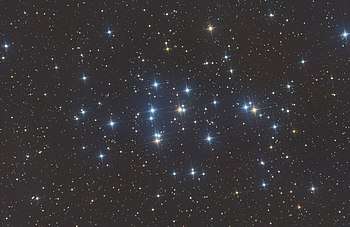M44 | NGC 2632 | Beehive Cluster | Cancer | 577 Light Years Away
Messier 44, commonly known as the Beehive Cluster or Praesepe, is an open star cluster located in the constellation Cancer. Visible to the naked eye, this celestial object has been observed since ancient times and was cataloged by Charles Messier in 1769. Positioned approximately 577 light-years away from Earth, Messier 44 is one of the nearest open clusters and is easily visible in the night sky.
Comprising over a thousand stars, Messier 44 spans a region of about 12 light-years in diameter. The name “Beehive Cluster” is derived from its appearance, resembling a swarm of bees when viewed through binoculars or a small telescope. The stars within this open cluster are gravitationally bound and formed from the same molecular cloud of gas and dust, providing astronomers with a valuable laboratory for studying stellar evolution and the dynamics of open star clusters.
Observations of Messier 44 contribute to our understanding of open star clusters, offering insights into the dynamics of stellar systems and the processes involved in the formation and evolution of stars within our galaxy. The study of such stellar groupings helps astronomers unravel the complexities of star birth and the interactions between stars in shared cosmic environments. Messier 44, with its diverse stellar population and easily observable nature, continues to captivate both amateur and professional astronomers, adding to the rich tapestry of knowledge about the stars in our galactic neighborhood.

